Among the distinguished contributors to Our Provincetown: Intimate Portraits, a book of painted Polaroids by Barbara E. Cohen published last month by Provincetown Arts Press and edited by Dorie Seavey, are David Dunlap, Michael Cunningham, Alison Bechdel, Nick Flynn, Joey Soloway, Paul Lisicky, and Sarah Schulman. Cohen asked 60 local figures to write about their favorite spots in town, which she accompanied with snapshots.
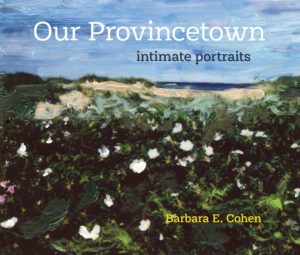
So, an unlikely highlight is an entry by 11-year-old Sonya Krahulik Alee. She writes of ascending the Pilgrim Monument — which her family calls the “Piggy Mommy Ant” due to a childhood mondegreen — with her moms, aunt, and cousin. “When we made it to the top,” she writes, “our aching shins and thirsty throats would all disappear, and before us would be Provincetown.”
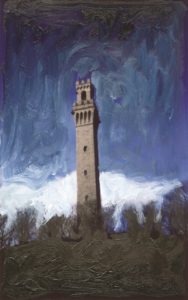
On the left-hand page is an entry by Mischa Richter, who writes of Provincetown as his childhood playground. “We built forts, went fishing, hunting, diving for coins and for lobsters, beachcombing, ice skating,” he writes. “We felt like we knew every inch of this beautiful place.” One day, he and some rambunctious friends snuck into the water tower. “Over the past forty years, I have thought many times about passing through that hatch, into the dark, dank, cavernous, and forbidden world.”
These entries are some of the most moving in Our Provincetown. Cohen’s painted Polaroid of the Penny Patch, which accompanies a memory by Brielle Kay Matson, is poignantly nostalgic. The Pride flags hanging from the windows grab the viewer’s eye like brightly colored candy. To a child, rainbows are beautiful, without any complication.
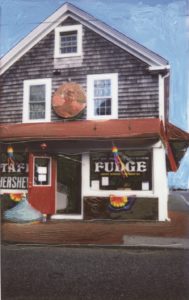
But the book also captures Provincetown’s grungy side. A Polaroid of the Old Colony Tap, painted so that it perfectly evokes the building’s chipped exterior, accompanies an excerpt by the late R.D. Skillings, taken from Summer’s End: Stories. “Yeah, every once in a while, you gotta get a little taste of the good stuff,” he writes, “have a cigarette, cup of coffee — whatever makes the world look good even for a minute, change your perspective.” Across from it is an entry by Dennis Minsky, first published in full in the Independent, about the alley between the O.C. and Lobster Pot. “This one might be considered the underbelly of the town, if you tend to be judgmental,” he writes.
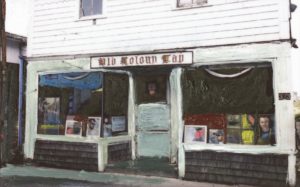
On the opposite end of the spectrum from Krahulik Alee’s childlike vision is an entry by Dawn Walsh. “Provincetown is no stranger to death,” she writes. “Its waters, dunes, forests, and marshes have kept vigil for centuries over lives lost to colonization, rogue waves and rough seas, AIDS, cancer, alcohol or drugs — or simply because the end had arrived for a life well-lived.”
Death makes an appearance in “Walking the Town,” the moving first entry by Heidi Jon Schmidt. She writes of strolling down West Vine with Skillings, her late husband, who exclaims that “you could really make something of this place.” In his dementia, she writes, “He had made something of Provincetown — six books — but he’d forgotten them.” The accompanying painted Polaroid by Cohen is nearly abstracted, with spring green and chalk white strokes that push forward at the viewer.
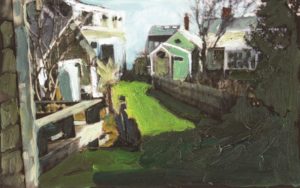
In just 80 pages, Our Provincetown manages to capture not just a town but, to some degree, the extremes of human experience. Among the other highlights are Alison Bechdel’s love letter to the Provincetown Gym, and Marie Howe’s memory of Jason Schinder, part-time resident of George’s Pizza. There’s also an ode to Land’s End Marine Supply by David Dunlap, and an entry about Spiritus Pizza’s feminist poetry readings by Jade McGleughlin and Sue Hyde that uses the word “dyke” a glorious four times.
Readers are made to ponder what they would choose as their Provincetown snapshot. For me, it might be Wired Puppy, one of the only coffee shops in town open before 8 a.m., great for early morning writing and people watching through its big windows. Or, it might be the Provincetown Independent office in Whaler’s Wharf, where I also spend a lot of time, overlooking the water. How lucky we are to live in this place.
